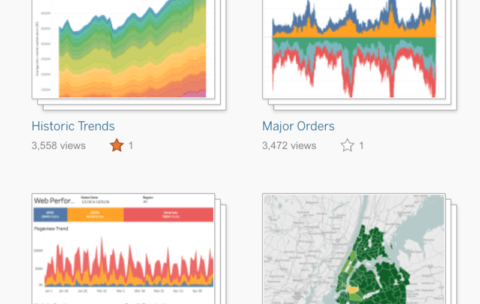All Analytics & BI Courses
Filter by Topic
Filter by Vendor
PL-300: Microsoft Power BI Data Analyst
Course Description: This course will discuss the various methods and …
CompTIA Data+
Course Description As the importance of data analytics grows, more …
What you'll learn
CompTIA Data+ gives you the confidence to bring data analysis to life
Analyzing complex datasets while adhering to governance and quality standards throughout the entire data life cycle
Mining data
Manipulating data
Visualizing and reporting data
Applying basic statistical methods
Advanced Architecting on AWS
Course Description Learn how to build complex solutions that incorporate …
What you'll learn
Apply the AWS Well-Architected Framework
Manage multiple AWS accounts for your organization
Connect an on-premises datacenter to the AWS Cloud
Discuss billing implications of connecting multi-region VPCs
Move large data from an on-premises datacenter to AWS
Design large data stores for the AWS Cloud
Understand different architectural designs for scaling a large website
Protect your infrastructure from distributed denial of service (DDOS) attacks
Secure your data on AWS with encryption
Design protection of data at rest and data in transit
Enhance the performance of your solutions
Select the most appropriate AWS deployment mechanism
Analyze and Visualize Data using Tableau
Course Description: The Analyze and Visualize Data using Tableau Certification …
What you'll learn
Basics about Tableau
How to connect, organize and slice data using Tableau
How to use multiple measures in a view
How learners can successfully show the relationship between various numerical values
How to map and customize data
How to view specific data
How to use quick table calculations to analyze the data in Tableau
How to use basic and advanced calculations in Tableau
How to extract data
What Tableau geocoding is
How to create using parameters
How to make dashboards and stories
Using Tableau to generate statistics
Using Tableau for forecasting
How to compare measures
How to assess the quality of data
How to use Tableau to perform exploratory analysis
Best practices while using Tableau
How to design visualizations for presentations
PL-900T00: Microsoft Power Platform Fundamentals
Course Description: Learn the business value and product capabilities of …
What you'll learn
Describe Microsoft Power Platform components
Describe Microsoft Dataverse, Connectors and AI builder
Describe cross-cloud scenarios across M365, Dynamics 365, Microsoft Azure and 3rd party services
Identify benefits and capabilities of Microsoft Power Platform
Identify the basic functionality and business value Microsoft Power Platform components
Implement simple solutions with Power Apps, Power Automate, Power BI, and Power Virtual Agents
Identify when to use each Microsoft Power Platform component application to create business solution
Learn the value of using Microsoft Power Platform to create business solutions
Learn the components and features of Microsoft Power Platform
Descibe the difference between Dataverse and Common Data Model
Explain use cases and limitations of business rules and process flows
Explain what environments, tables, columns, and relationships are in Dataverse
Learn how other organizations digitize their processes using Power Apps
See Power Apps in action and learn options for making your first app
Learn about what Power Apps is and its business value
See how Power Automate works and looks from the user’s perspective
Build a simple flow
Learn the business value and features of Power Automate
See how Power BI works and looks from the user’s perspective
Learn how to build a simple Power BI dashboard
Describe the business value and features of Power BI
Describe the business value and features of Power Virtual Agents
Build a basic chatbot
Learn essential components that make up Power Virtual Agents and chatbots
55232-A: Writing Analytical Queries for Business Intelligence
Course Description: This three-day instructor led course is about writing …
What you'll learn
Identify independent and dependent variables and measurement levels in their own analytical work scenarios.
Identify variables of interest in relational database tables.
Choose a data aggregation level and data set design appropriate for the intended analysis and tool.
Use TSQL SELECT queries to produce ready-to-use data sets for analysis in tools such as PowerBI, SQL Server Reporting Services, Excel, R, SAS, SPSS, and others.
Create stored procedures, views, and functions to modularize data retrieval code.
Describe the purpose of analytical queries
Describe the function of TSQL data retrieval in an analytics/business intelligence environment
Describe the primary functions of the database engine
Discuss TSQL as a declarative language
Identify variables of interest in database tables
Write basic SELECT queries
Implement column expressions in SELECT queries
Implement column and table aliases
Describe data types and Implement data type conversions
Implement built-in functions
Use WHERE and ORDER BY clauses in SELECT queries
Discuss and describe the conceptual flow of JOIN operations
Implement INNER and OUTER JOIN operations on two or more tables
Describe the order of operations of SELECT clauses
Combine JOIN operations with WHERE and ORDER BY
Describe the row granularity of result sets
Discuss and implement aggregate functions to achieve required row granularity
Use GROUP BY to calculate aggregate values for groups
Use HAVING to filter records in the result set by aggregate value
Combine GROUP BY and HAVING with WHERE and ORDER BY
Describe and discuss the rationale of creating intermediate results sets within SELECT queries
Implement non-correlated and correlated subqueries
Implement derived tables
Implement Common Table Expressions
Create intermediate to advanced TSQL queries to retrieve result sets for analysis
Identify scenarios in which views, table-valued functions, and stored procedures simply data retrieval
Compare and contrast views, table-valued functions, and stored procedures
Create views, table-valued functions, and stored procedures
Describe the security requirement for creating database objects
Implement views, table-valued functions, and stored procedures for users with read-only access to source data
Describe the properties of database connection strings
Run queries from, and return results to, Excel, PowerBI, and RStudio
Export query results to external text files using the SSMS results pane, the bcp utility, and the Import/Export Wizard
55049-A: PowerPivot, Power View and SharePoint 2013 Business Intelligence Center for Analysts
Course Description: This two-day instructor-led course concentrates on PowerPivot and …
What you'll learn
Successfully log into their virtual machine.
Use PowerPivot 2013 in Excel.
Work with DAX.
Create Power View visualizations.
Understand data models.
Save to SharePoint.
Surface on SharePoint.
Work with the SharePoint Business Intelligence Center.
Create dedicated apps in SharePoint for PowerPivot and Power View.
Use PowerPivot within Excel to import a table from SQL Server.
Use PowerPivot within Excel to import a table from SQL Server Analysis Services.
Hide columns they don’t want reflected in the resulting PivotTable.
View the relationships existing within the imported tables from SQL Server and then import an additional table and configure a relationship between it and the existing.
Create a PivotTable within an existing worksheet.
Navigate and successfully use Power View.
Create a table.
Create a chart.
Save and share their work.
Create a BI semantic model.
Explore the options and settings available within the new SharePoint 2013 Central Administration and Excel Services.
Access and review the Secure Store.
Create a new web application and business intelligence site while exploring the features of both.
Create custom apps to store visualizations and/or workbooks in SharePoint 2013 Business Intelligence Center.
55164-A: Quick Powerful Graphics with Power View, PowerPivot, Power Query, Power Map and Power BI
Course Description: This is a 2-days course designed to teach …
What you'll learn
Navigate the Power View interface.
Utilize Power View reports.
Work with tables.
Understand aggregations.
Utilize matrix.
Configure drill through.
Use cards as a visualization.
Apply filters.
Create charts.
Utilize tiles.
Add slicers to reports.
Utilize themes.
Navigate the PowerPivot interface.
Examine and configure relationships.
Configure calculated columns are calculated fields.
Create PivotTables.
Understand and utilize DAX.
Work with hierarchies.
Manage perspectives.
Navigate the Power Query interface.
Merge datasets.
Manage modifications.
Perform data cleaning.
Navigate the Power Map interface.
Use Bing maps.
Examine map data.
Configure tours, scenes, and layers.
Add time to a presentation.
Navigate the Power BI interface.
Utilize data sources.
Understand querying with natural language.
Successfully log into their virtual machine.
Have a full understanding of what the course intends to cover.
- 1
- 2















